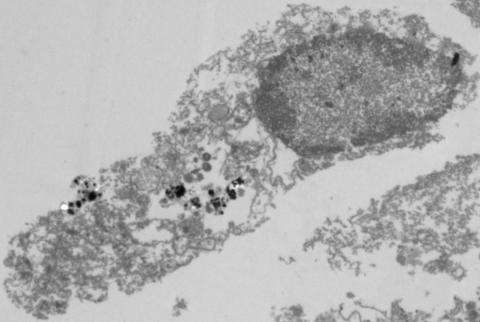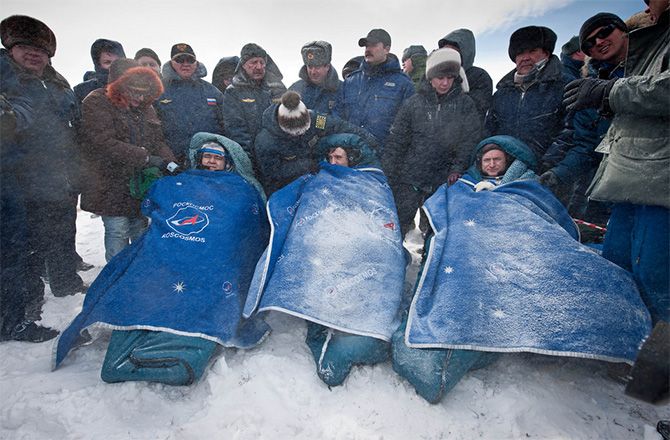This really sad news; cancer is showing up among children more often than originally reported. I will admit in my own family that we had our 1st reported case. She is doing amazing and we’re all proud of her. However, I encourage more needs to be done to prevent this from occurring in the most innocent of lives.
Page 11354
Feb 21, 2016
Ocular Cancer: Scientists Develop Nanoparticle With Potential To Treat Ocular Cancer
Posted by Karen Hurst in category: biotech/medical
Using nanoparticles to treat Ocular Cancer.
A new nanoparticle shows potential for treating ocular cancer by turning tumor cells against themselves.
Feb 21, 2016
Record 18,300 Apply for NASA Astronaut Training
Posted by Karen Hurst in category: space
NASA many applications for a shot at Space.
More than 18,300 people have applied for 14 or fewer spots in NASA’s next astronaut class, shattering the 1978 record of 8,000 applicants.
Feb 21, 2016
Asteroid Art Gallery: NASA To Open Art Gallery On The Asteroid Bennu
Posted by Karen Hurst in categories: security, space travel
The art gallary of space.
Are you tired looking for a gallery space to exhibit your artwork? Well, now you have a chance to show off your work in an asteroid art gallery, thanks to NASA.
According to CNN, the space agency is inviting people to send their artworks to an asteroid on its new spacecraft: the Origins, Spectral Interpretation, Resource Identification, Security-Regolith Explorer, or OSIRIS-REx. The mission, led by the University of Arizona, will also collect a sample of the asteroid Bennu and return it to Earth for study for the first time in history.
Continue reading “Asteroid Art Gallery: NASA To Open Art Gallery On The Asteroid Bennu” »
5G in 2016 — Nokia CEO says it is.
5G mobile technology will start to get defined “in real terms” by the end of this year, Suri said at a press briefing Sunday on the eve of Mobile World Congress.
Feb 21, 2016
Debunking the hysteria about cyberterrorism. Some sensible advice
Posted by Karen Hurst in categories: finance, quantum physics
Interesting article and does bring into question; what is “Cyberterrorism?” In the definition that I understand “Cyberterrorism” is when a person/s or a group inflict threats or conducts activities to create fear and/ or panic across the population. Therefore, with this definition cyberterrorism donesn’t necessarily be tied to a specific race, religion, political alliances, a gender, etc. It truly is any action or activity that creates fear and panic.
Unfortunately, this article really center on Cyberterrorism tied to certain group namely ISIS. And, only focusing on groups like ISIS is a big mistake; especially when you have hackers attacking hospitals, governments, banks, consumers, etc. and in some cases extorting money from their victims which ultimately has created fear and concerns across the population. Even the US Navy is considering to disconnect some of their own systems from the net. And, 2015 was the worst year ever for cyber attacks.
And, today, China (a country that has been listed as the country where most of the US Cyber attacks are coming from) has announced that they are on verge of providing their country Quantum technology which would mean China (including the hackers) would have an upper hand on protecting their systems and can easily hacked other countries systems including those with sophisticated encryptions.
Continue reading “Debunking the hysteria about cyberterrorism. Some sensible advice” »
Feb 21, 2016
Sudan Vision Daily — Details
Posted by Karen Hurst in categories: nanotechnology, particle physics, quantum physics, space travel
Love on a Subatomic Scale.
When talking about love and romance, people often bring up unseen and mystical connections. Such connections exist in the subatomic world as well, thanks to a bizarre and counterintuitive phenomenon called quantum entanglement. The basic idea of quantum entanglement is that two particles can be intimately linked to each other even if separated by billions of light-years of space; a change induced in one will affect the other. In 1964, physicist John Bell posited that such changes can occur instantaneously, even if the particles are very far apart. Bell’s Theorem is regarded as an important idea in modern physics, but it seems to make little sense. After all, Albert Einstein had proven years before that information cannot travel faster than the speed of light. Indeed, Einstein famously described the entanglement phenomenon as “spooky action at a distance.” In the last half-century, many researchers have run experiments that aimed to test Bell’s Theorem. But they have tended to come up short because it’s tough to design and build equipment with the needed sensitivity and performance, NASA officials said. Last year, however, three different research groups were able to perform substantive tests of Bell’s Theorem, and all of them found support for the basic idea. One of those studies was led by Krister Shalm, a physicist with the National Institute of Standards and Technology (NIST) in Boulder, Colorado. Shalm and his colleagues used special metal strips cooled to cryogenic temperatures, which makes them superconducting — they have no electrical resistance. A photon hits the metal and turns it back into a normal electrical conductor for a split second, and scientists can see that happen. This technique allowed the researchers to see how, if at all, their measurements of one photon affected the other photon in an entangled pair. The results, which were published in the journal Physical Review Letters, strongly backed Bell’s Theorem. “Our paper and the other two published last year show that Bell was right: any model of the world that contains hidden variables must also allow for entangled particles to influence one another at a distance,” co-author Francesco Marsili, of NASA’s Jet Propulsion Laboratory (JPL) in Pasadena, California, said in a statement. There are practical applications to this work as well. The “superconducting nanowire single photon detectors” (SNSPDs) used in the Shalm group’s experiment, which were built at NIST and JPL, could be used in cryptography and in deep-space communications, NASA officials said. NASA’s Lunar Atmosphere Dust and Environment Explorer (LADEE) mission, which orbited the moon from October 2013 to April 2014, helped demonstrate some of this communications potential. LADEE’s Lunar Laser Communication Demonstration used components on the spacecraft and a ground-based receiver similar to SNSPDs. The experiment showed that it might be possible to build sensitive laser communications arrays that would enable much more data to be up- and downloaded to faraway space probes, NASA officials said.
Feb 21, 2016
Global Healthspan Policy Institute Photo
Posted by Matt Johnstone in categories: health, life extension, policy
Feb 21, 2016
No Big Bang? Quantum equation predicts universe has no beginning
Posted by Karen Hurst in categories: cosmology, information science, mathematics, quantum physics, singularity
New equation proves no “Big Bang” theory and no beginning either as well as no singularity.
(Phys.org) —The universe may have existed forever, according to a new model that applies quantum correction terms to complement Einstein’s theory of general relativity. The model may also account for dark matter and dark energy, resolving multiple problems at once.
The widely accepted age of the universe, as estimated by general relativity, is 13.8 billion years. In the beginning, everything in existence is thought to have occupied a single infinitely dense point, or singularity. Only after this point began to expand in a “Big Bang” did the universe officially begin.
Continue reading “No Big Bang? Quantum equation predicts universe has no beginning” »
Feb 21, 2016
New Japanese ‘Robot Farm’ Can Grow Vegetables Anywhere on Earth
Posted by Dan Kummer in categories: food, robotics/AI, sustainability
A new fully-automated farm in Japan can be used to grow vegetables anywhere on Earth with little human input, but it may not yet be a solution to solve hunger, the company’s CEO told Sputnik Japan.


















